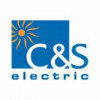
i
Polycab
Wires
Filter interviews by
Polycab Wires Electrical Site Engineer Interview Questions and Answers
7 Interview questions
The torque a synchronous motor can develop depends on its size and design.
The torque is directly proportional to the current supplied to the motor.
The torque also depends on the strength of the magnetic field produced by the rotor.
Larger synchronous motors can develop higher torque than smaller ones.
For example, a 500 kW synchronous motor can develop a torque of around 1500 Nm.
The torque can also be affected by fa...
The average resistance of a human body is approximately 1,000 ohms.
The resistance of a human body can vary depending on factors such as skin moisture, contact area, and voltage applied.
Dry skin has higher resistance compared to moist skin.
The resistance can be affected by the presence of sweat, water, or other conductive substances on the skin.
The resistance decreases when the contact area between the body and a c...
Cable protectors can safeguard cables against mechanical injury.
Cable protectors can be used to cover and shield cables from physical damage.
Flexible conduits or cable trays can be installed to provide a protective pathway for cables.
Using cable ties or clamps to secure cables in place can prevent them from being accidentally pulled or strained.
Applying cable armor or armored cables can provide additional protecti...
The earth wire or ground wire is typically made of copper or aluminum.
The earth wire is an essential safety component in electrical systems.
It is used to provide a path for electrical current to safely discharge into the ground.
Copper is commonly used for earth wires due to its excellent conductivity and corrosion resistance.
Aluminum is also used in some cases, especially for overhead power lines.
The earth wire is...
The maximum range of voltage rating for belted cables varies depending on the specific application and industry standards.
The voltage rating of belted cables can range from low voltage (LV) to high voltage (HV).
LV belted cables typically have a voltage rating of up to 1 kV.
HV belted cables can have voltage ratings ranging from 1 kV to several hundred kilovolts (kV).
The exact voltage rating of belted cables is dete...
A fuse protects electrical circuits by breaking the circuit when excessive current flows, preventing damage and hazards.
Prevents overheating: A fuse melts when current exceeds its rating, stopping the flow of electricity.
Protects equipment: By breaking the circuit, it prevents damage to appliances and devices from overcurrent.
Safety measure: Fuses reduce the risk of electrical fires caused by short circuits or ove...
Conventional flow assumes charges flow from positive to negative terminals.
Conventional flow is based on the assumption that current flows from positive to negative terminals.
This convention is used in electrical engineering and circuit analysis.
For example, in a battery-powered circuit, conventional flow assumes that electrons flow from the positive terminal of the battery to the negative terminal.
Polycab Wires Electrical Site Engineer Interview Experiences
1 interview found
I applied via Referral and was interviewed before Jun 2020. There was 1 interview round.
Interview Questionnaire
10 Questions
- Q1. Transmission voltage of 11 kv is normally used for distances up to...km
- Q2. What is the maximum range of voltage rating for belted cables are in used?
- Ans.
The maximum range of voltage rating for belted cables varies depending on the specific application and industry standards.
The voltage rating of belted cables can range from low voltage (LV) to high voltage (HV).
LV belted cables typically have a voltage rating of up to 1 kV.
HV belted cables can have voltage ratings ranging from 1 kV to several hundred kilovolts (kV).
The exact voltage rating of belted cables is determine...
- Q3. The distribution systems are mostly used in India
- Q4. Conventional flow assumes charges flow from
- Ans.
Conventional flow assumes charges flow from positive to negative terminals.
Conventional flow is based on the assumption that current flows from positive to negative terminals.
This convention is used in electrical engineering and circuit analysis.
For example, in a battery-powered circuit, conventional flow assumes that electrons flow from the positive terminal of the battery to the negative terminal.
- Q5. How much torque a synchronous motor can develop?
- Q6. An underground system cannot be operated above
- Q7. What can protect a cable against mechanical enjury?
- Ans.
Cable protectors can safeguard cables against mechanical injury.
Cable protectors can be used to cover and shield cables from physical damage.
Flexible conduits or cable trays can be installed to provide a protective pathway for cables.
Using cable ties or clamps to secure cables in place can prevent them from being accidentally pulled or strained.
Applying cable armor or armored cables can provide additional protection ag...
- Q8. Earth wire or ground wire is made of
- Ans.
The earth wire or ground wire is typically made of copper or aluminum.
The earth wire is an essential safety component in electrical systems.
It is used to provide a path for electrical current to safely discharge into the ground.
Copper is commonly used for earth wires due to its excellent conductivity and corrosion resistance.
Aluminum is also used in some cases, especially for overhead power lines.
The earth wire is usua...
- Q9. Average resistance of a human body is
- Ans.
The average resistance of a human body is approximately 1,000 ohms.
The resistance of a human body can vary depending on factors such as skin moisture, contact area, and voltage applied.
Dry skin has higher resistance compared to moist skin.
The resistance can be affected by the presence of sweat, water, or other conductive substances on the skin.
The resistance decreases when the contact area between the body and a conduc...
- Q10. The main function of fuse is to
- Ans.
A fuse protects electrical circuits by breaking the circuit when excessive current flows, preventing damage and hazards.
Prevents overheating: A fuse melts when current exceeds its rating, stopping the flow of electricity.
Protects equipment: By breaking the circuit, it prevents damage to appliances and devices from overcurrent.
Safety measure: Fuses reduce the risk of electrical fires caused by short circuits or overload...
Interview Preparation Tips
Top trending discussions






Interview questions from similar companies

Electrical Site Engineer Interview Questions & Answers
KEI Industriesposted on 8 Nov 2023
I applied via Naukri.com and was interviewed in May 2023. There were 4 interview rounds.

About your work style and work management
(4 Questions)
- Q1. Test your deep technical knowledge of your work
- Q2. Transformer working principle.
- Ans.
Transformer works on the principle of electromagnetic induction to transfer electrical energy between two or more circuits.
Transformers have two coils of wire, known as primary and secondary coils.
When an alternating current flows through the primary coil, it creates a changing magnetic field.
This changing magnetic field induces a voltage in the secondary coil, transferring electrical energy.
Transformers are used to st...
- Q3. Proses of new meter installation.
- Ans.
The process of new meter installation involves site survey, meter selection, installation, testing, and commissioning.
Site survey to determine the location and requirements for the new meter
Meter selection based on the specific needs and specifications of the site
Installation of the new meter by qualified electricians or engineers
Testing the meter to ensure accurate readings and proper functionality
Commissioning the me...
- Q4. What is the Proses of LOTO? How it's works?
- Ans.
LOTO stands for Lockout/Tagout. It is a safety procedure used to ensure that dangerous machines are properly shut off and not started up again prior to the completion of maintenance or servicing work.
LOTO involves isolating energy sources, locking them out, and tagging them to indicate that maintenance work is being performed.
Workers involved in the maintenance work are the ones who apply the locks and tags, ensuring t...
(4 Questions)
- Q1. Discussed about your salary
- Q2. Why you want this job?
- Q3. Why we hire you?
- Q4. Why are you leaving your previous company?
Interview Preparation Tips

Assistant Manager Interview Questions & Answers
CG Power and Industrial Solutionsposted on 5 Mar 2019
I applied via Approached by Company and was interviewed before Mar 2018. There was 1 interview round.
Interview Preparation Tips
Skills: Communication, Body Language, Decision Making Skills
Duration: >3 Months

I applied via Referral and was interviewed before Mar 2021. There were 2 interview rounds.

(6 Questions)
- Q1. What is your family background?
- Q2. What are your salary expectations?
- Q3. Why should we hire you?
- Q4. Why are you looking for a change?
- Q5. What are your strengths and weaknesses?
- Q6. Tell me about yourself.
Interview Preparation Tips
Iam working in fan division there was a heavy pressure,
Stock always not available

I applied via Referral and was interviewed before Aug 2021. There was 1 interview round.
(4 Questions)
- Q1. Pahle kya kaam karte the
- Ans.
Before becoming a Service Engineer, I worked in various technical roles, gaining hands-on experience in troubleshooting and maintenance.
Worked as a technician in a repair shop, fixing electronic devices like smartphones and laptops.
Gained experience in customer service by assisting clients with technical issues and providing solutions.
Interned at a manufacturing company, where I learned about equipment maintenance and ...
- Q2. Battery main kitne cell hote hai
- Ans.
A battery typically consists of multiple cells, with common configurations including 1.2V, 3.7V, or 12V systems depending on the application.
A standard lead-acid battery usually has 6 cells, each providing 2V, totaling 12V.
Lithium-ion batteries often have multiple cells in series or parallel, like 3.7V cells in a pack.
In a 12V battery system, you can find configurations like 6 cells in series for lead-acid or multiple ...
- Q3. Battery ki toc ka full form
- Q4. Ocv ka kya matlab hota hai
Interview Preparation Tips
- Mscit ,telly

Railways about rail manufacturing

Deputy Manager Interview Questions & Answers
CG Power and Industrial Solutionsposted on 20 Aug 2024
I applied via Naukri.com and was interviewed before Aug 2023. There were 2 interview rounds.
(2 Questions)
- Q1. About work in perverse organisation
- Q2. Current work and other expectations
(1 Question)
- Q1. Salary expectations in job
- Ans.
I am looking for a competitive salary that reflects my experience and skills.
Research industry standards for Deputy Manager salaries
Consider my years of experience and level of responsibility
Negotiate based on the benefits and opportunities offered by the company

Electrical Engineer Interview Questions & Answers
CG Power and Industrial Solutionsposted on 14 Jun 2025
I appeared for an interview before Jun 2024, where I was asked the following questions.
- Q1. What is a locomotive?
- Ans.
A locomotive is a rail transport vehicle that provides the motive power for trains.
Locomotives can be powered by diesel engines, electric motors, or steam engines.
They are designed to pull or push train cars along railway tracks.
Examples include the GE ES44AC diesel locomotive and the Siemens ACS-64 electric locomotive.
Locomotives are equipped with various controls for speed, braking, and safety.
They often have a disti...
- Q2. What is an auxiliary converter?
- Ans.
An auxiliary converter is a device that converts electrical energy for auxiliary systems in larger power systems.
Used to supply power to auxiliary equipment like control systems and lighting.
Commonly found in power plants, ships, and industrial applications.
Examples include DC-DC converters and AC-DC converters.
Enhances system reliability by providing backup power.
- Q3. What are the differences between Direct Current (DC) and Alternating Current (AC)?
- Ans.
DC flows in one direction, while AC changes direction periodically, affecting their applications and characteristics.
DC (Direct Current) flows steadily in one direction, e.g., batteries.
AC (Alternating Current) changes direction periodically, e.g., household power supply.
DC is used in low-voltage applications like electronics and batteries.
AC is used for high-voltage power transmission and in homes.
DC has a constant vo...
- Q4. What is a trainer, and what are the different types of trainers?
- Ans.
A trainer is a professional who imparts knowledge and skills in a specific field, using various methods and tools.
Types of trainers include: Technical Trainers (e.g., software training), Corporate Trainers (e.g., leadership skills), and Fitness Trainers (e.g., personal trainers).
Technical Trainers focus on specific skills or technologies, such as programming languages or software applications.
Corporate Trainers develop...
- Q5. What is control wiring?
- Ans.
Control wiring refers to the electrical connections that manage and control machinery and equipment operations.
Used in automation systems to connect sensors, switches, and controllers.
Examples include wiring for relays, contactors, and programmable logic controllers (PLCs).
Typically involves low voltage circuits for safety and efficiency.
Control wiring can be found in HVAC systems, industrial machinery, and home automa...
- Q6. What is an auxiliary converter, and what does it mean?
- Ans.
An auxiliary converter is a device that converts electrical energy for auxiliary systems in larger electrical systems.
Used in power systems to supply power to non-primary loads.
Examples include DC-DC converters for battery charging.
Common in renewable energy systems to manage energy flow.
Can provide power for control systems, lighting, and HVAC.
- Q7. What is a transformer?
- Ans.
A transformer is an electrical device that transfers electrical energy between circuits through electromagnetic induction.
Transforms voltage levels: steps up or steps down voltage.
Consists of primary and secondary coils wound around a magnetic core.
Used in power distribution systems to manage voltage levels.
Example: A step-down transformer reduces 220V to 12V for household use.
Essential for efficient long-distance elec...
- Q8. What are high tension (HT) and low tension (LT) panels?
- Ans.
HT panels handle high voltage, while LT panels manage low voltage in electrical distribution systems.
HT panels operate at voltages above 1 kV, typically used in substations.
LT panels operate at voltages below 1 kV, commonly used in residential and commercial buildings.
HT panels are used for transmission and distribution of electricity over long distances.
LT panels are used for local distribution and powering appliances...
- Q9. What are the types of motor control panels?
- Ans.
Motor control panels manage and control electric motors, ensuring efficient operation and protection.
Direct-On-Line (DOL) Starter: Simple and cost-effective for small motors.
Star-Delta Starter: Reduces starting current for larger motors.
Variable Frequency Drive (VFD): Controls motor speed and torque by varying frequency.
Soft Starter: Gradually increases motor voltage to reduce mechanical stress.
Programmable Logic Contr...
- Q10. What are the types of power control panels?
- Ans.
Power control panels manage and distribute electrical power in various applications, ensuring safety and efficiency.
Motor Control Centers (MCC): Used for controlling motors in industrial applications.
Distribution Boards: Distribute electrical power to various circuits.
Automatic Transfer Switch Panels: Switch between power sources automatically during outages.
Control Panels for Generators: Manage generator operations an...
Interview Preparation Tips

Electrical Engineer Interview Questions & Answers
Medha Servo Drivesposted on 12 May 2022
I applied via AmbitionBox and was interviewed in Apr 2022. There were 4 interview rounds.
(2 Questions)
- Q1. About electrical engineering trade diploma leval
- Q2. Diploma(electrical engineering) level question

Interview Preparation Tips
Thank you.

(2 Questions)
- Q1. About last job work
- Q2. Why we shilling hire you?
Polycab Wires Interview FAQs
Tell us how to improve this page.
Polycab Wires Interviews By Designations
- Polycab Wires Deputy Manager Interview Questions
- Polycab Wires Senior Manager Interview Questions
- Polycab Wires Assistant Manager Interview Questions
- Polycab Wires Graduate Engineer Trainee (Get) Interview Questions
- Polycab Wires Territory Sales Incharge Interview Questions
- Polycab Wires Engineer Interview Questions
- Polycab Wires Sales Executive Interview Questions
- Polycab Wires Senior Executive Interview Questions
- Show more
Interview Questions for Popular Designations
- Electrical Engineer Interview Questions
- Service Engineer Interview Questions
- Site Engineer Interview Questions
- Maintenance Engineer Interview Questions
- Electrical Technician Interview Questions
- Executive Engineer Interview Questions
- Electrical Supervisor Interview Questions
- Electrical Design Engineer Interview Questions
- Show more
Interview Questions from Similar Companies
Polycab Wires Electrical Site Engineer Reviews and Ratings
based on 2 reviews
Rating in categories
|
Assistant Manager
475
salaries
| ₹4 L/yr - ₹9.6 L/yr |
|
Deputy Manager
368
salaries
| ₹4.2 L/yr - ₹13.5 L/yr |
|
Manager
222
salaries
| ₹4.9 L/yr - ₹18 L/yr |
|
Executive Engineer
185
salaries
| ₹3 L/yr - ₹7 L/yr |
|
Senior Manager
176
salaries
| ₹7 L/yr - ₹23.5 L/yr |

CG Power and Industrial Solutions

C&S Electric

KEI Industries

Medha Servo Drives
- Home >
- Interviews >
- Polycab Wires Interview Questions











